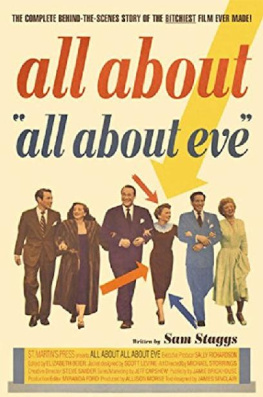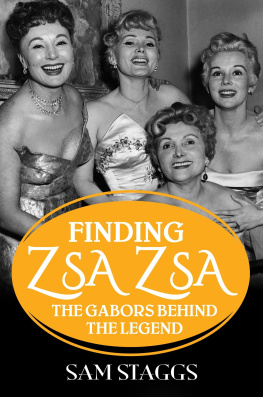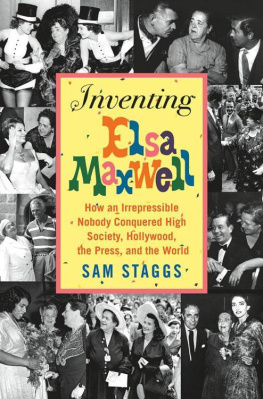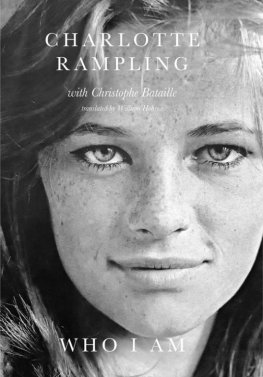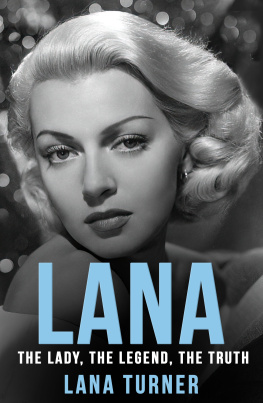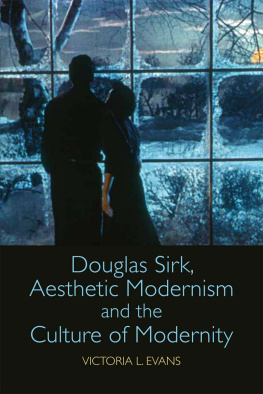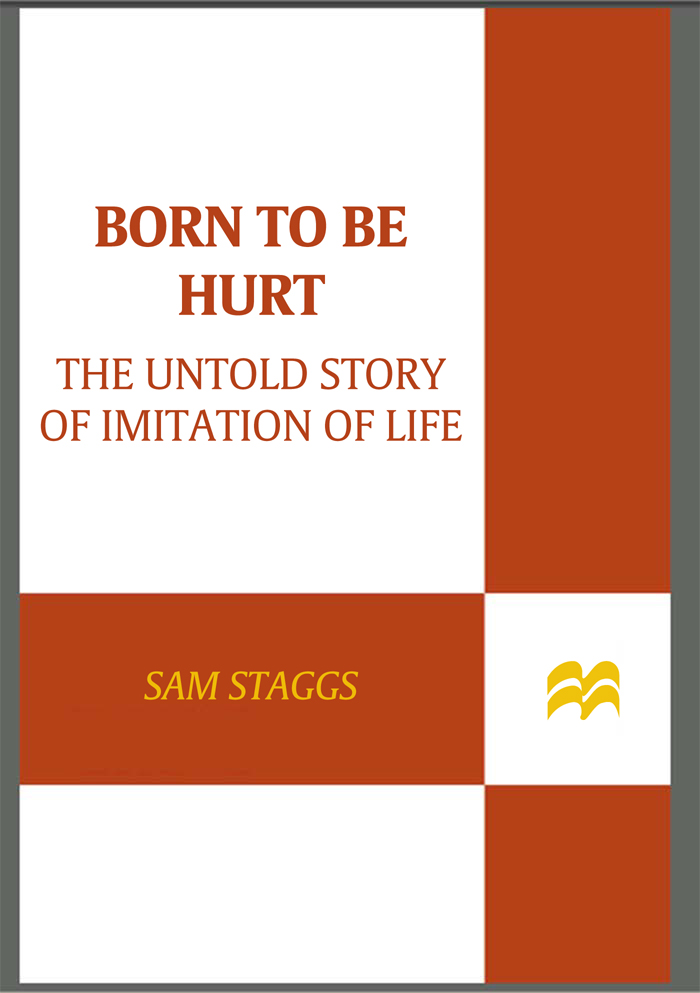BORN TO BE HURT
ALSO BY SAM STAGGS
When Blanche Met Brando
Close-up on Sunset Boulevard
All About All About Eve
BORN
TO BE Hurt
THE UNTOLD STORY OF IMITATION OF LIFE
SAM STAGGS

ST. MARTINS PRESS
NEW YORK
BORN TO BE HURT . Copyright 2009 by Sam Staggs.
All rights reserved. Printed in the United States of America.
For information, address St. Martins Press,
175 Fifth Avenue, New York, N.Y. 10010.
www.stmartins.com
Design by Fritz Metsch
Library of Congress Cataloging-in-Publication Data
Staggs, Sam.
Born to be hurt : the untold story of Imitation of Life / Sam Staggs. 1st ed.
p. cm.
Includes bibliographical references and index.
ISBN-13: 978-0-312-37336-8
ISBN-10: 0-312-37336-8
1. Imitation of Life (Motion picture : 1959) I. Title.
PN1997.I455S73 2009
791.43'72dc22
First Edition: February 2009
10 9 8 7 6 5 4 3 2 1
To Juanita Moore and Susan Kohner,
with love and admiration
CONTENTS
.
... how to prepare the child for the day when the child would be despised and how to create in the childby what means?a stronger antidote to this poison than one had found for oneself.
JAMES BALDWIN
Notes of a Native Son
INTRODUCTION
RECAPTURING THE PAST
APRIL 7, 2004
F or a long time, down the years, Ive thought about Imitation of Life. Tonight, crossing the courtyard to the lobby of the Egyptian Theatre in Hollywood for the forty-fifth anniversary screening, I wonder how future thoughts will evolve. This event promises to be a summing up of the films emotional grip on me, on all of us here. Moreover, this screening is a late vindication of my own fervor, which has never lessened since the day I saw Douglas Sirks Imitation of Life at a young age, sat through it three times, and finally left the movie house in that small Southern town dimly aware that an indelible lifeline had been crossed.
Tonight is a climax because, unlike those countless other times Ive watched Imitation of Life, two surviving stars will appear, Juanita Moore and Susan Kohner. Together againhow has time dealt with them? Lana Turner, gone for a decade but strangely extant even before the picture starts, towers as a great unseen entity. Thats one of the elusive promises made by movies: Great stars never die.
Crowds have gathered. Fans from Los Angeles and around the country line up outside, stream into the theatre for a facsimile of those glamorous premieres of the old days. But theres a big, big difference. The stars who once made Hollywood so addictive have joined Lana. Tonight, no one alights from long limousines out front, nor do flashbulbs pop. (How could they? Everything is digital.) Rumors circulate that Juanita Moore arrived quietly half an hour ago, and a sharp-eyed fan saw Susan Kohner slip into the theatre through a side door.
... and in their dressing rooms already, someone grouses. Whatever happened to the star entrance?
Another chimes in, Its a black hole in space.
I wish I could pause tonight amidst this Hollywood razzle-dazzle to examine how this picture helped transpose my life to a different key, but heres Ann Robinson and I want to ask her a question.
Oh, honey, you know what? I dont recall a thing about Douglas Sirk, she replies with a laugh. I was only on the set for a couple of days, and I cant remember that he directed me at all. Robinson played Susan Kohners hard-faced, redheaded showgirl roommate in the motel scene near the end of the picture, when the ailing black woman pays a final visit to her light-skinned daughter, who has shunned her and who now passes for white.
Anns husband snaps a picture of us. As our eyes readjust, fans thrust photos and note cards for her signature, and so our conversation must wait. My number is 213-250... she says, and I scribble it down. Call me anytime, dear.
I know, all too well, that another survivor, Sandra Dee, wont show up. She is desperately ill, with less than a year to live. Nor John Gavin, who left Hollywood to act as Ronald Reagans questionable ambassador to Mexico. Cheryl Crane, Lanas daughter, is eagerly awaited by some in the throng. Dont hold your breath, I overhear as I pass through the lobby. This movie is the worst thing that ever happened to her. Make that the second worst.
Snatches of fan gossip, garish lights on Hollywood Boulevard, the cooling desert at sunset, the faded glory of this very locale, but most of all the picture thats soon to startall come together to magnetize me with a hybrid emotion. What to call it? More than pleasure, it balloons to edgy euphoria, though its also flecked with dolor. Movies do that to us. If we take them seriously, or too seriously, after a time they may conjure up all our former selves, those beings who, young and credulous, genuflected to screen romance, to images retouched, to those stupendous divinities on Mount Hollywood before the gods turned into bores.
What if we never watched a movie again after a first passionate exposure? Would Imitation of Life hold sway over me if I recalled only its first-day impact? Who would I be, I wonder, if I couldnt recite passages from memory, close my eyes and see the picture unspool as on an old-style projector? Sometimes I feel that I belong to it, which is surely one of those false, proprietary consolations movies give.
These profundities evaporate as an old friend accosts me in the lobby. He has flown in from Ohio, and I half expect to see him with a trunk full of costly Imitation of Life memorabilia to spread out for Susan and Juanita like treasures for a caliph. Look at this half sheet from Larry Edmunds, he pants. But stillsforget it. Anyone here tonight would know the lingo without translation, but the uninitiated might not guess that a half sheet is a large movie poster, that Larry Edmunds is a famous movie memorabilia shop just down the street, and that, indeed, on the day of the screening, collectors had emptied the store of every still photo from Imitation of Life.
As I finally proceed down the aisle and take a seat in this place thats more Egyptianish than Egyptian, I recall the vast ocean of movies Ive crossed since I first plunged into Imitation of Life. Now the anniversary, and a book to write. How will I tell the story of this key picture, which, more than most, refracts the colors of a lifetime to form a rainbow of emotions? Although I belong to the vast Sirk freemasonry, I must nevertheless stand outside the sect to observe. Will Imitation of Lifeafter the nonstop talk, the adulation and the argument, grave tomes devoted to it by lofty scholars, and tears shed throughout the worldstand up for me at the end, or dissolve like the remnant of some phantom dream? Can it survive adult and contemporary scrutiny, or will it ultimately look small, like this imitation theatre in its faux Egyptianness, a travesty of vanished temples by the Nile?
Now Im seated in row two, and before the lights go down I try to explain to myself how this picture affected that boy I was, why it still rules my emotional tides at every viewing. Most obvious: the matter of race. Not long after seeing Imitation of Life, with its Eastman Color tableaux depicting the ravages of discrimination, I wrote an English class term paper, its topic: prejudice. This being an unwelcome subject in the South during the civil rights struggle, my teacher responded, Its not prejudice at all! Thats what


